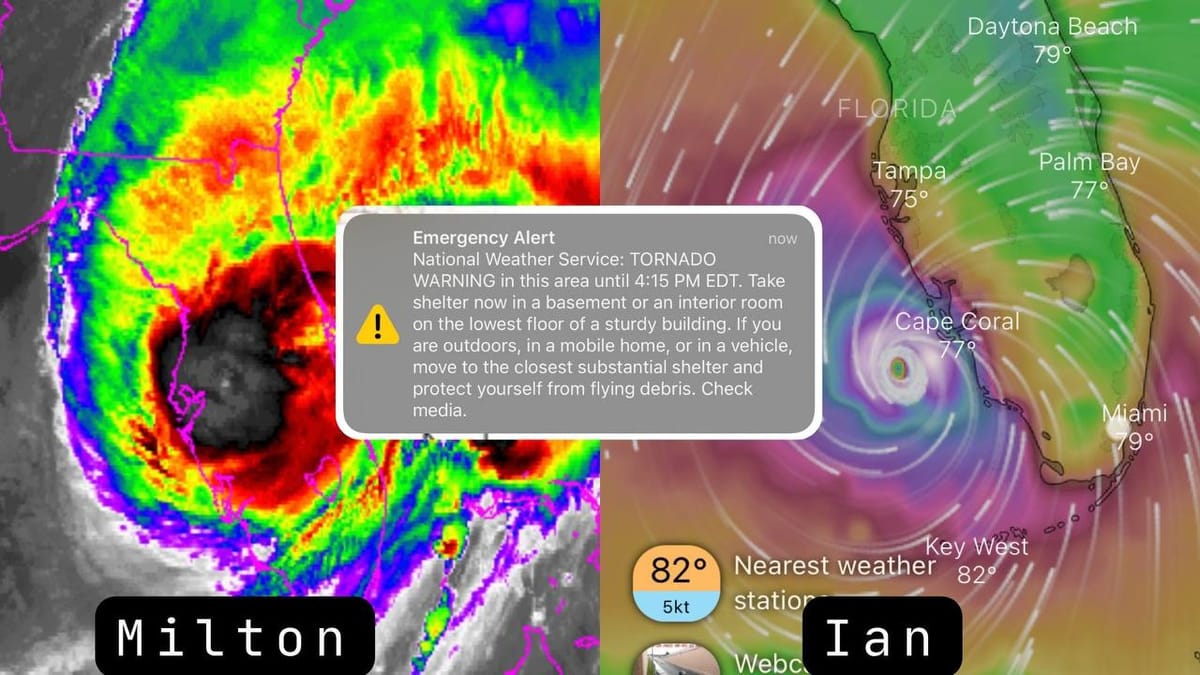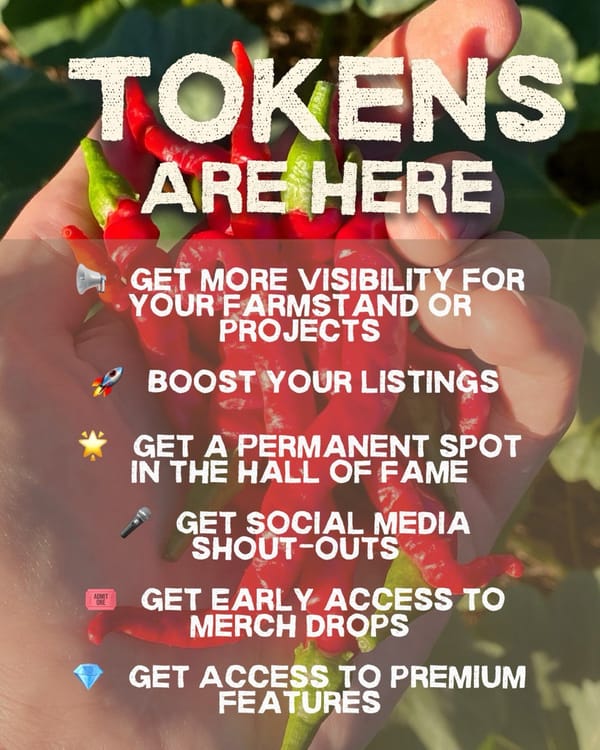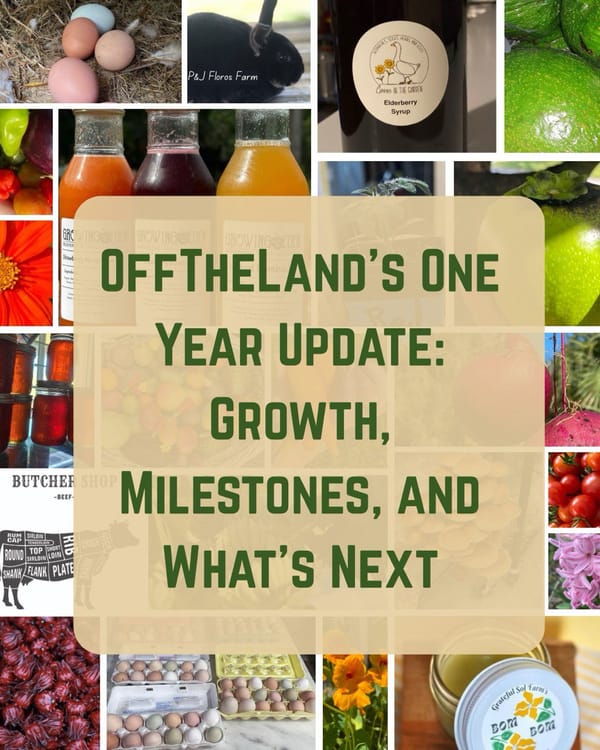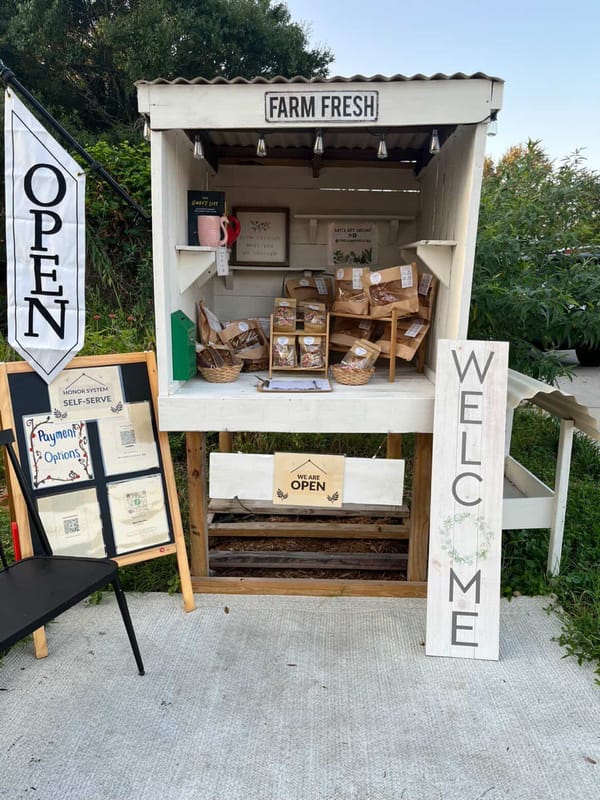THE ULTIMATE HOMESTEADER'S HURRICANE PREPAREDNESS GUIDE (2025 EDITION)

From food forests to well pumps, radios to tornadoes, here’s how to survive the storm with confidence and community.
INTRODUCTION: WHEN THE WIND HITS HOME
When Hurricane Milton swept over our part of Florida at night, we had no idea whether the eye had passed or if we were still in danger. We were boarded up tight, forecasts on my phone were outdated, and the howling wind outside didn’t offer any clues. That experience changed everything for me.
If you’re a Florida gardener, food forest grower, or someone who lives close to the land with well pumps, chickens, and a garden instead of a grocery list, you already understand the need to prepare. This guide is for you, packed with real lessons, overlooked scenarios, and practical tools to help you prepare smarter.
Save it. Share it with your neighbors. And come add your wisdom in the comments.
Important: Always take official evacuation orders seriously. Even if you're well-prepared, some storms are simply too dangerous to ride out. Your safety comes first.
1. KNOW YOUR STORM: FLORIDA’S HURRICANE REALITY IN 2025
Why Florida homesteaders need to prepare differently
Florida isn’t just hurricane-prone, it’s hurricane central. From the Panhandle to the Keys, nearly every region has seen major landfalls. And for homesteaders, the risks multiply: trees falling in food forests, loss of off-grid systems, livestock exposure, and limited evacuation options.
More than just wind: the many hidden risks
We all picture heavy winds, but many forget:
- Inland flooding and storm surge
- Tornadoes (destructive and fast)
- Fires from lightning, candles, and wet lithium batteries
- Long-term grid outages
- Supply chain collapse (even if you’re inland)
- Opportunists and looters showing up in the aftermath
Homesteaders may be better prepared than the average person, but they also have more assets at risk. Preparing means thinking ahead in layers.
Takeaway: Stay ahead with smart, tailored prep.
2. COMMUNICATIONS: DON’T COUNT ON YOUR PHONE (UNLESS IT HAS ACCESS TO SATELLITES, BUT TRIPLE CHECK THAT IT DOES)
Hurricane Milton at night: the moment I realized I was totally disconnected
During Hurricane Milton, we lost all cell service. I had taken screenshots of forecast maps earlier in the day, but something had changed overnight. We were boarded up, no power, and I had no clue if the storm had passed. That feeling of isolation was real. From now on, I’ll never go into another storm without off-grid communications.
Why phones and apps fail during hurricanes
When towers go down or local power grids are damaged, most smartphones become useless. Apps that rely on real-time data become unreliable. And texting family across town? Forget it.
The exception: Some newer cell phones now offer direct-to-satellite texting. It’s a game changer if your model supports it and if you understand how to use it. Don’t assume it works out of the box. Triple-check that it’s activated and test it before the storm.
Also worth noting: Starlink satellite internet systems are becoming more common. Some homesteaders now use a Starlink system with a standby battery or generator backup, ready to deploy for emergency internet access. If you have a good open-sky view, it can be incredibly useful.
Radios for homesteaders (GMRS, NOAA, mesh)
For most of us, the backbone of storm communication is still radio:
- AM/FM radios
- GMRS radios: Great for neighborhood-level comms. Longer range than walkie-talkies, and better audio. Requires a low-cost license, but no test.
- NOAA Weather Radios: Look for models with SAME alerts.
Building your own local communications plan with neighbors
One of the most powerful things you can do: Get your neighborhood or local group on the same radio frequency. During a blackout, you can check on each other, coordinate supplies, or even call for help. Practice beforehand. Label and program your radios. Know who checks in and when.
Write down important emergency phone numbers and tape them near your radios or phones because you may not have access to digital backups during or after the storm.
Takeaway: Phones are great until they aren’t. Have a backup. Better yet, have a plan.
3. POWER OUTAGES: BACKUP PLANS FOR HOMESTEAD ENERGY
What works: generators, inverters, and power banks
If you lose power, how long can you function? For most of us, a generator is the first line of defense. But it’s not always efficient to run it all day. One of the smartest shifts we made: using the generator only to get the fridge cold and charge up the high-capacity power banks. After that, phones, laptops, and LED lights draw from the stored energy in the power bank.
My well pump fix: from 220V to 110V during the blackout
If your well pump is wired for 220V and your generator only supports 110V, you’re in trouble. Mine just happened to be compatible with both (some rewiring needed though). If you are an electrician, get the schematics and diagrams ahead of time, and if you are not, then this is probably not realistic, so figure out your backup strategy today!
Solar charger? Crank handle? These are not realistic during the hurricane
Solar sounds good, but during a hurricane and the days after, it’s mostly overcast. Solar doesn’t deliver what you think it will unless you have a full battery wall setup, which most people don’t. Focus instead on generator plus battery strategy. Cranking the handle is not realistic when you are most likely doing a million other things.
Water and gas shutoffs
Make sure you know where your home’s main water and gas shutoff valves are located, and how to turn them off safely. If a line breaks or floods breach your property, quick action can prevent much bigger problems.
Optional: whole-home generator hookup
If you have the means, consider hiring a licensed electrician to install a transfer switch (also called a cutout switch). This allows you to safely backfeed your home’s electrical panel with a generator. With a large enough generator, this setup can periodically power your well pump, air conditioner, refrigerator, septic tank pump, and more. The downsides? These generators are costly, burn a lot of fuel, and may be too loud or inefficient for continuous use. Still, it’s a strong option for short-term full-house power if managed carefully.
Takeaway: Be power-smart. Generators aren’t your only option, but they need to be part of a system.
4. WATER SECURITY: EVERY DROP COUNTS
When the power goes out, wells stop running, city water might get contaminated, and bottled water instantly disappears from shelves. A layered water strategy is essential.
Bathtub trick: why it saved us (and how to improve it)
We fill the tub before every storm. But now we go a step further: cover the tub with plastic wrap or a sheet to avoid turning the bathroom into a sauna. This water isn’t for drinking, it’s for flushing toilets and washing hands.
Rain catchment using large totes
Large totes under your gutters (or side of the roof) can provide hundreds of gallons of non-potable water. We use these for washing dishes (with boiled or filtered water), cleaning tools, flushing, and more.
Filters, boiling, storage tips and mistakes to avoid
Boiling is one option, but it requires fuel and time. We now keep:
- A gravity-fed water filter
- Lugol’s iodine (as backup)
- Extra jugs of water in the freezer before landfall (they help keep food cold too)
Disposable dishes? Yes, just this time
I’m usually against one-time plastic use. But in this case, I recommend having disposable cups, plates, forks, and spoons on hand. You do not want to be creating bacterial conditions from half-washed dishes. Dysentery during a hurricane is a bad time.
Takeaway: Water security isn’t just about storage. It’s about sanitation.
5. FOOD STRATEGY: GARDEN FRESH OR SHELF-STABLE?
Some people talk about beans and rice or freeze-dried meals. But if you’re used to fresh vegetables, the transition is rough. We need to think more locally.
Garden before the storm: harvest early, clear fragile plants
If you have a food forest or veggie garden, pick what you can before the winds come. Even unripe fruits are better in your kitchen than scattered across the ground.
Preserved veggies: not just a nice-to-have
Whether you ferment, can, dehydrate, or vacuum-seal, having preserved produce is a huge comfort. Herbal teas, tinctures, and spice mixes also come in handy.
You will crave freshness
Depending on how long recovery takes, shelf-stable foods will only take you so far. A functioning garden, even if damaged, can help provide leafy greens, herbs, and hydration-rich foods (like chaya, moringa, katuk).
Takeaway: If you garden, you already have an edge. Double it with some preservation habits.
6. FLOOD AND SURGE PREP: WHAT MOST PEOPLE FORGET
The “giant ziplock” method for your vehicle and valuables
We’ve seen people drive onto a massive plastic tarp, then wrap it up like a burrito and seal it off with tape and clamps. It works for vehicles, lawn mowers, and other things that can’t be stored inside. If floodwaters come fast, this could save thousands of dollars.
How to flood-proof doors and sheds
Quick trick: Use expanding foam along the bottom of doors, shed seams, and window cracks. Once dry, cover with a spray-on rubberized sealant (like Flex Seal spray). It’s not perfect, but it significantly slows down water and buys you time.
Board up your windows
If you're expecting high winds, install storm shutters or use plywood to protect glass windows and doors. Even a single broken window can let rain and debris destroy the inside of your home.
Prepping your yard
Make sure gutters flow away from structures, sandbags are pre-filled and accessible, and anything light or floating is tied down. Flooding isn’t always from surge, it can be from relentless rain with nowhere to go.
Takeaway: Wind may take the spotlight, but water is the silent destroyer. Plan for both.
7. HIDDEN HAZARDS: LITHIUM FIRES, TORNADOES, AND WEAK GEAR
Be careful with lithium batteries
Cordless tools often rely on lithium-ion batteries. If these get wet, they can short-circuit, catch fire, or even explode. Store them high and dry well before the storm.
Keep extra fire extinguishers
After the storm, many people rely on propane stoves, grills, or candles. Fires happen more often than you’d expect. Keep extinguishers in key locations: kitchen, garage, and sleeping areas.
Tornadoes come with hurricanes
Hurricanes often spin off tornadoes in outer bands, especially inland. Don’t wait until it’s too late, secure outdoor gear and designate a safe interior room.
Weak gear = weak link
We learned the hard way that cheap candles barely put out any light and some radios couldn’t tune in. Test your supplies beforehand. Don’t wait until they’re your only option.
Takeaway: Storms reveal weak links. Inspect and test everything in advance.
8. COMMUNITY RESILIENCE: THE REAL LIFELINE
Know your neighbors
No matter how much you prep, you can’t do it all. Know who’s staying, who needs help, and who has tools, medical skills, or key resources. Share your plans and create shared roles. Seriously, talk to your neighbors.
Build a local check-in plan
Designate times for radio or in-person check-ins post-storm. Use GMRS or mesh radios. Walkie-talkie groups work too. The goal is knowing everyone’s status.
Share recovery tasks
Clearing debris, sharing food, checking fences, everything is easier together. Homesteading isn’t about isolation; it’s about community resilience.
Emotional aftermath
The mental toll of storms can be heavy. Debriefing as a community, sharing stories, and checking on each other’s well-being makes a difference.
Takeaway: Strong communities bounce back faster. Don’t wait for the crisis to connect.
9. GRAB-N-GO CHECKLISTS AND PRO TIPS
Power and Fuel
- Generator filled and tested
- Extension cords inspected
- Power banks charged and staged
- Propane stoves checked
Communication
- GMRS radios labeled
- NOAA weather radio ready
- Phone satellite texting verified
Emergency Kit
- Med kit and herbal remedies
- Fire extinguishers
- Flashlights and headlamps
- Copies of ID and prescriptions
Community
- Radio channel agreed upon
- Check-in buddy confirmed
- Pets accounted for
Shelter & Documents
- Locate your nearest public shelter and identify at least two routes to get there
- Store scanned copies of important documents (IDs, insurance, prescriptions) in a cloud folder or email them to yourself so you can access them from anywhere, even if your home or phone is lost
Takeaway: Pack for reality, not the fantasy version of a disaster.
Food and Water
- Harvest garden before storm (especially if you have fruit that can become missiles, like avocado)
- Preserve or store extra produce
- Fill bathtub and setup rain catchment
- Water filters, iodine, and jugs prepped
- Disposable plates and utensils
10. PRIOR HURRICANE TAKEAWAYS AND LESSONS LEARNED
- Evacuation Readiness: Always have your stuff ready to evacuate.
- Personal Responsibility: You are responsible for your safety. The government and aid may not be timely or available
- Shelter-in-Place: Stock supplies to last two weeks minimum. Include toiletries, pet food, meds (see list below)
- Community First: The best help is nearby. Share tools, skills, and information
- Short-Term Survival: Avoid unnecessary risk. If not evacuating, stay put, avoid floodwaters, and remain calm
- Mid-Term Reality: Expect chaos: power out, communication spotty, fuel and food in short supply. People stressed and on edge. Stay alert for strangers or opportunists
- Ongoing Vigilance: Cascading disasters like post-hurricane fires or grid instability are real. Remain prepared
Supplies worth repeating:
- Fire extinguishers
- AM/FM radio (no crank, no solar)
- Legal pads and pens
- Protective boots or waders
- Emergency documents printed and saved digitally
- Quick meals, not just rice and beans
- Dishwashing bins, lots of buckets, and bleach
- Personal protection if appropriate
Final note: Storms are unpredictable, but how we respond doesn't have to be. Plan, connect, and stay steady.
11. WHAT’S NEXT: JOIN US AND PREPARE TOGETHER
Storm prep is better when shared, so post your storm experiences, tips, and local maps in the comments (just register for a free account).
Call to action: The best prep isn’t gear: it’s neighbors. Join OffTheLand.net for free to connect with others and build resilience.
About OffTheLand: We're building a network of local producers and neighbors who grow, trade, and thrive together — creating resilient, transparent economies that aren’t dependent on global supply chains.





